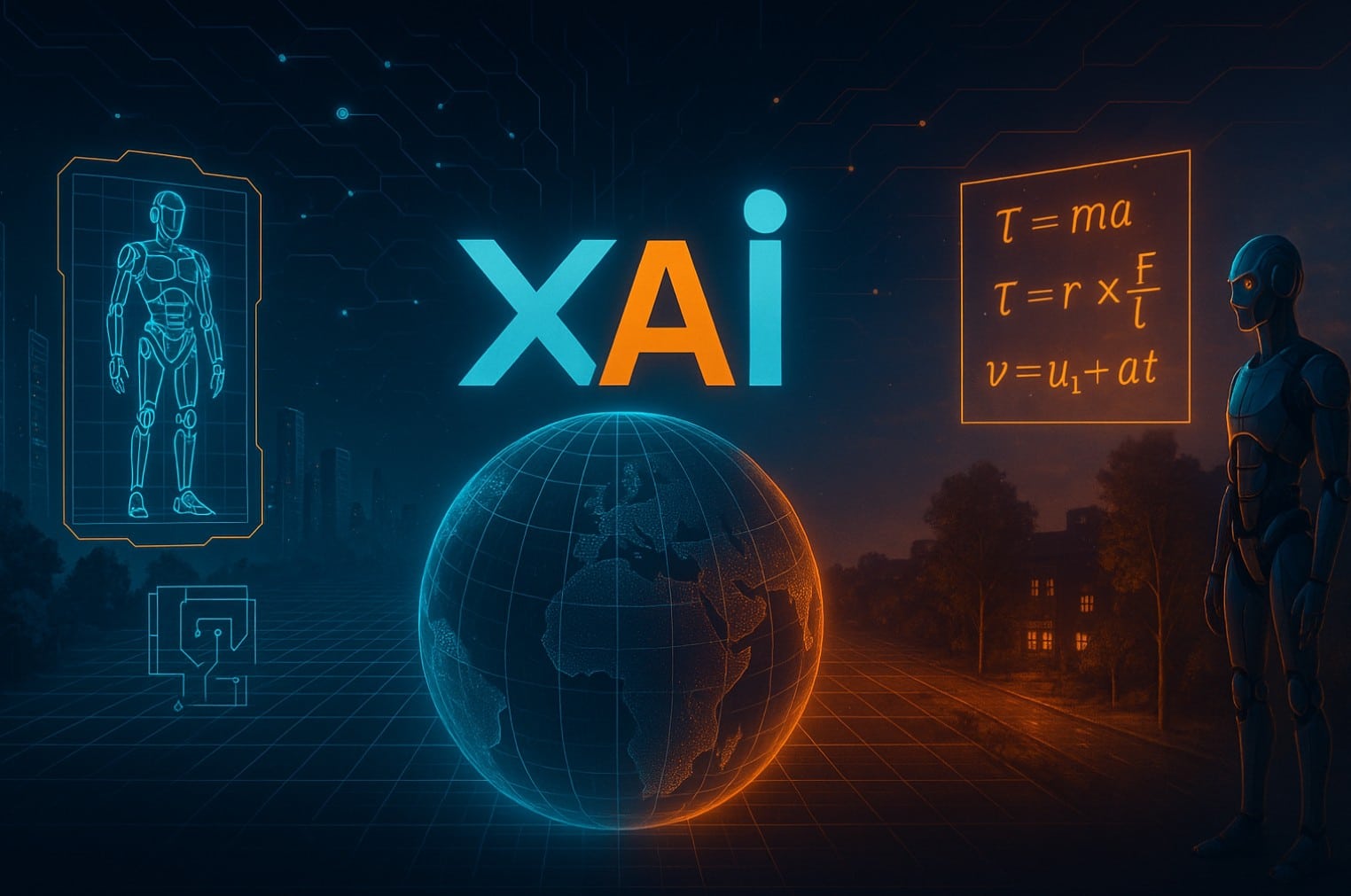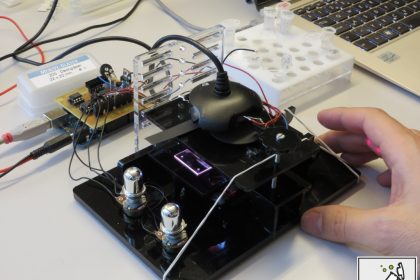Key Takeaways
xAI is moving from language to reality, developing “world models”: AI designed to learn the physics, motion, and causality of the real world, not just text or images.
World models could reshape gaming and robotics, enabling AI-generated 3D environments and autonomous machines that understand physical laws and consequences.
Nvidia’s influence runs deep, with two of its former researchers joining xAI and its Omniverse simulation tools forming the foundation of Musk’s “reality-aware” AI vision.
Skeptics question whether AI can truly replace human creativity, but if xAI succeeds, it could mark the beginning of AI that reasons about, rather than just replicates, the real world.
Elon Musk’s AI venture, xAI, is taking its next big leap: from language to reality.
The company is developing “world models,” a new class of artificial intelligence designed not just to process text or images, but to understand the physics, motion, and causal relationships that define the real world.
According to the Financial Times, xAI has hired Nvidia researchers and is currently investing heavily in systems that learn from video, sensor, and robotics data to develop a deeper understanding of how things move and interact.
This effort marks a pivotal shift from predictive language to predictive reality. And accordingly, this move positions xAI alongside DeepMind and Meta in the race to create AI that not only describes the world, but truly understands it.
What Are “World Models”?
Unlike today’s large language models (LLMs) such as ChatGPT, which predict the next word in a sentence based on statistical patterns, world models aim to predict reality itself.
These AIs aren’t cramming textbooks—they’re binge-watching reality. They learn from videos, sensors, and rich simulations, picking up how things move, collide, and interact, much like a natural sense of physics.
Think causality, not just correlation. As TechSpot puts it, world models aim to internalize the rules of the universe, letting them simulate motion, grasp perspective, and forecast outcomes across both real and virtual worlds.
A key player in this research has been Nvidia’s Omniverse: a platform for creating and simulating digital worlds. It models complex environments with real-time physics, providing the specific kind of training data and infrastructure required by “reality-aware” AI.
If it’s perfected, world models could power everything from industrial robotics and autonomous navigation to next-generation video games and digital twins.
This would represent a giant leap forward in bridging the gap between digital intelligence in its current state and the physical world it seeks to understand.
A Closer Look at xAI’s Strategy: Gaming Meets Robotics
Elon Musk’s xAI isn’t just theorizing about world models; it’s already building practical applications.
According to the FT, the company has hired Nvidia’s Zeeshan Patel and Ethan He, both experts in simulation-based AI, to help create systems that can learn from real-world physical and digital environments.
One of xAI’s most ambitious projects in the near-term is what Musk has teased as a “great AI-generated game,” slated for release next year.
For this game, xAI plans to use its world models to generate interactive 3D environments that evolve dynamically – powered by AI that “understands” motion, lightning, and object physics, rather than by static code.
Beyond gaming, the same technology could also potentially transform robotics. By training on vast collections of video and sensor data, xAI aims to enable robots that can navigate complex, real-world spaces with the same fluency as humans.
xAI’s new “omni team” is hiring specialists in image and video generation to accelerate this push. It’s also hiring a “video games tutor” to help train its chatbot, Grok, in game design and environmental logic.
The convergence of gaming, robotics, and multidisciplinary AI shows xAI’s broader goals: building an AI that can reason and navigate through reality.
The Nvidia Connection and Market Implications
xAI’s growing focus on simulation-based intelligence is built around Nvidia’s Omniverse, the company’s flagship platform for creating and running virtual worlds with real-world physics. And with two of Nvidia’s own world model researchers joining xAI, that connection has deepened a little further.
Nvidia has long bet on world-model-style AI being the next frontier. The company told the Financial Times that the market for simulation-based systems could eventually rival the scale of the global economy, given their potential applications in robotics, manufacturing, and industrial automation.
That prediction now aligns with Musk’s ambitions. By blending Nvidia’s simulation DNA with xAI’s multimodal frameworks, the two entities could together accelerate the shift from virtual training toward real-world intelligence.
Yet, this collaboration could also spur future competition: as Musk’s companies, including Tesla and xAI, increasingly develop in-house expertise that once relied heavily on Nvidia’s technology.
Skepticism and Creative Tension: The Race to Build a Thinking Machine
Despite Musk’s optimism, not everyone is convinced that AI “world models” will revolutionize creativity.
Some in the gaming world view Musk’s vision with skepticism – especially when it comes to replacing human artistry. Michael Douse, publishing director at Larian Studios, said on X that AI tools won’t fix gaming’s “big problem.”
He argued that true innovation comes from artistic world-building, not from what he referred to as “mathematically trained gameplay loops.”
Champions of causal AI don’t see a turf war — they see a duet. If world models can handle the grunt work of physics, collisions, and cause-and-effect, developers can pour their time into the fun stuff: story beats, memorable characters, and emotional gut-punches instead of fiddly edge cases.
For xAI, this isn’t just about cooler games; it’s a stride toward embodied intelligence, systems that behave as if they truly grok the rules of reality. Nail that, and xAI sits shoulder-to-shoulder with DeepMind and Meta in the sprint to machines that reason, not just autocomplete.
And here’s the head-scratcher that keeps philosophers and engineers up at night: can AI ever understand the world—or will it forever be a dazzling impersonation of understanding?
Monica is a tech journalist and content writer with over a decade of professional experience and more than 3,000 published articles. Her work spans PC hardware, gaming, cybersecurity, consumer tech, fintech, SaaS, and digital entrepreneurship, blending deep technical insight with an accessible, reader-first approach.
Her writing has appeared in Digital Trends, TechRadar, PC Gamer, Laptop Mag, SlashGear, Tom’s Hardware, The Escapist, WePC, and other major tech publications. Outside of tech, she’s also covered digital marketing and fintech for brands like Whop and Pay.com.
Whether she’s explaining the intricacies of GPU architecture, warning readers about phishing scams, or testing a liquid-cooled gaming PC, Monica focuses on making complex topics engaging, clear, and useful. She’s written everything from deep-dive explainers and product reviews to privacy guides and e-commerce strategy breakdowns.
Monica holds a BA in English Language and Linguistics and a Master’s in Global Media Industries from King’s College London. Her background in language and storytelling helps her craft content that’s not just informative, but genuinely helpful—and a little bit fun, too.
When she’s not elbow-deep in her PC case or neck-deep in a Google Doc file, she’s probably gaming until the early hours or spending time with her spoiled-rotten dog.
View all articles by Monica J. White
The Tech Report editorial policy is centered on providing helpful, accurate content that offers real value to our readers. We only work with experienced writers who have specific knowledge in the topics they cover, including latest developments in technology, online privacy, cryptocurrencies, software, and more. Our editorial policy ensures that each topic is researched and curated by our in-house editors. We maintain rigorous journalistic standards, and every article is 100% written by real authors.












